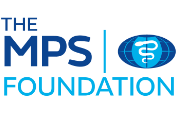Project title
Pressure points: Identifying patterns of stress in medical students’ responses to clinical situations through simulation
Country
UK
Background
Medical students are often confronted with challenging clinical situations during their training. Stress reactions in these situations can negatively impact the thought processes required for learning and patient care. Little is known, however, about the specific types of tasks and activities that trigger these stress responses, or whether these stress responses are associated with a greater likelihood of errors. Until recently, conducting research in this field was plagued with challenges in detecting rapidly changing emotional states. Recent advances in recording and analysing heart rate variability (HRV), a specific and sensitive indicator of stress, offer a feasible means for the precise characterisation of rapidly changing affective responses in medical students.
Summary
Final year medical students will take part in 10-to-20-minute simulation stress-inducing scenarios based on common causes of clinical deterioration in hospital. The scenarios will be video recorded, and the participants’ HRV will be recorded for the duration of the scenarios. The video recording and HRV recordings will be time-matched to allow for subsequent comparison of stressful moments and the events in each scenario.
Using latent safety threat frameworks and a non-technical skills behavioural marker system (Medi-StunNTS), the trained observers will rewatch the scenarios to identify actual and latent errors in the scenarios, including the time these errors/threats occurred. The data will be analysed to determine whether stress responses are associated with specific types of events during patient care, and whether they are associated with a greater likelihood of errors or latent safety threats.
Outcome
This study will investigate patterns of stress responses in medical students during simulated scenarios to look at which tasks and activities are associated with greater stress responses and determine whether moments of greater stress during simulated clinical situations are more likely to be associated with errors or latent safety threats to the patient.

